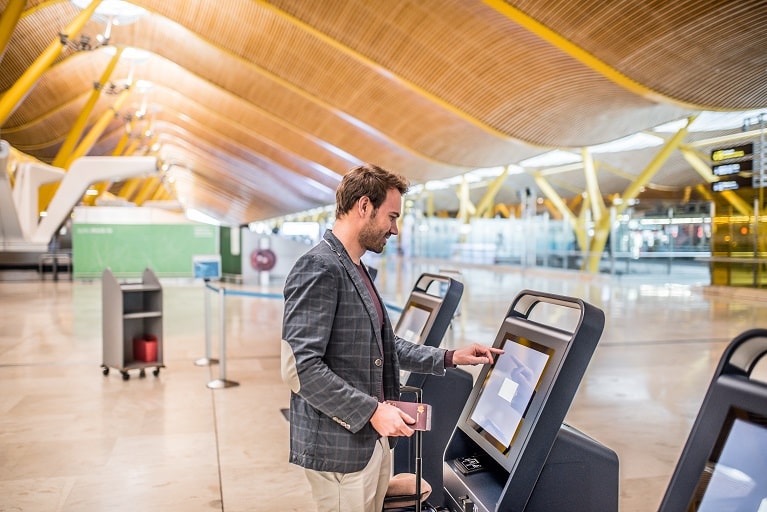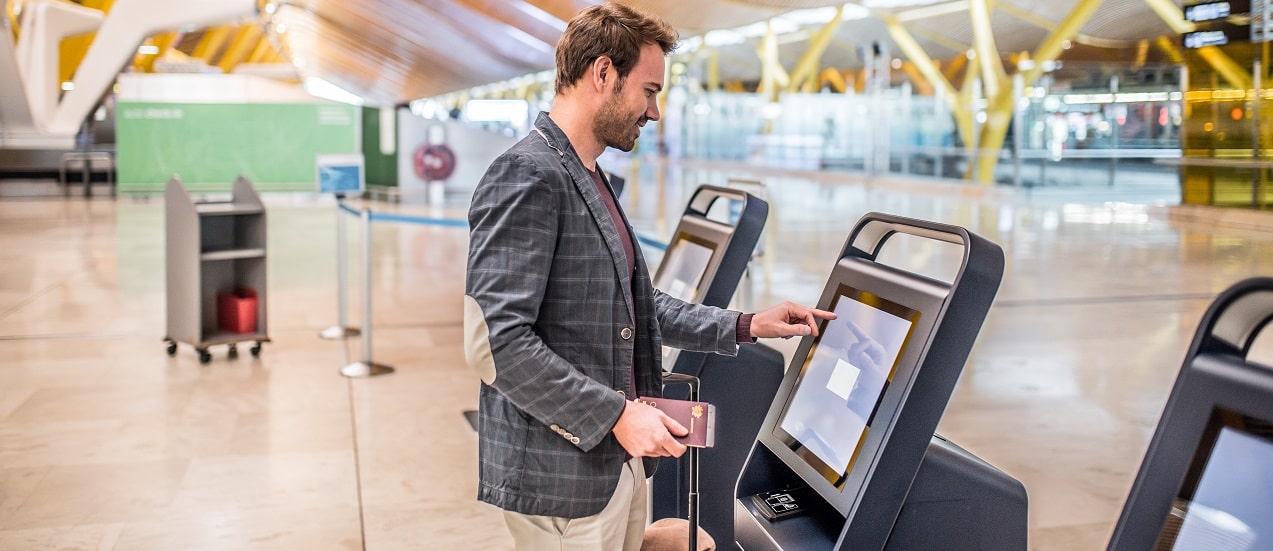The aviation industry was among those most impacted by COVID-19. While the industry is still reeling under the pandemic's aftereffects, we can also begin to spot accelerated technological innovations that would have otherwise taken years.
Technology is evolving at lightning pace, making it a great time to embrace it, emerging as a future-ready, intelligent airline. Airlines can tap technologies like Artificial Intelligence (AI), Machine Learning (ML), big data, assistive technologies, mixed reality, NLP, cloud computing to derive the following benefits:
- achieve operational excellence through real-time actionable insights
- overcome interdepartmental silos
- develop interoperability and collaboration
- captivate many other smart decision drivers
Sounds great, but the obvious next question is about the 'how.' How do you leverage tech? Let's find out.
How can airlines use technology to succeed in the post-COVID world?
Here are some tech-enabled steps that can add value:
- From the curb to the gate in 30mn, with an almost touchless experience at the airport.
- Augment ancillary sales yields by using intelligent merchandising platforms.
- Create an ideal baggage handling experience by leveraging digital bag tags and advanced technologies.
- Optimize turnaround processes by using computer vision and machine learning (ML) models.
- Reduce the impact of disruption by identifying the early stages of disruption and optimizing a recovery plan.
- Decrease maintenance and engineering efforts through predictive and prescriptive analytics to avoid unplanned maintenance and overhead expenses.
- Automate back-office jobs by leveraging Robotic Process Automation (RPA).
.jpg?width=763&name=Intelligent%20airlines%20(35).jpg)
Such an intelligent airline can be a perfect blend of smarter people, optimized processes, and state-of-art technology. This article will explain how airlines can sculpt the future of air travel by focusing on a seamless customer experience and intelligent operations.
Seamless airline customer experience.
Customer experience is the new battlefield where airlines can use the latest technologies as their most potent weapons. They are now discovering how AI and ML can improve customer experience and meet modern customer demands by focusing on personalization.
With rapidly evolving mobile technologies and ease of connectivity, new-age travelers have developed a habit of exploring, connecting, and buying on the go. The attention span of today's buyers is also quite limited, implying that the current way of non-personalized engagement will not work. Airlines need to rethink how they can sell according to the evolved market conditions and traveler expectations. Fortunately, AI-enabled technologies have the power to make this happen. As has already been proven in the retail industry, contextualization, and personalization—two related AI technologies— have made consumer engagements much more successful.
In AI-based personalization, the system learns the user's likes, dislikes, and preferences to create personas and customer segmentation.
AI-based contextualization means that the system considers the current situation and circumstances with general world knowledge, which often affects the decision for or against a specific option.
Airlines can use AI to develop an intelligent merchandising capability that combines personalization and contextualization in real-time. This helps determine the most relevant offerings that meet customers' travel needs. It also maximizes the conversion rate and gives a one-click buying experience to the customers.
At the same time, digitally mature airlines have begun adopting IATA standards such as New Distribution Capability (NDC) and one order to modernize their product retailing and create a transparent buying experience. NDC gives airlines the capability to easily sell ancillary and rich content directly to aggregators like OTA and GDS through a set of standard XML APIs..
Apart from NDC's capabilities, AI models can also help airlines build an intelligent and advanced retailing system to offer more value to the customer. NDC enables airlines to sell flights and ancillaries in a retail way. AI-based technologies allow airlines to add a personalized and contextual wrapper to achieve a higher look-to-book ratio, allowing airlines to transition from non-personal selling to retail-driven personalized selling.
Inlaying agility in airline operations
Airline operations are complex and have many challenges like inter-departmental silos, manual processes, and low collaborations. These challenges then lead to operational inefficiencies. Innovative technologies can help by creating an intelligent airline ecosystem and inlaying agility into operations. Let's examine three such areas.
Enabling data-driven insights and collaboration
Airlines can build a collaborative ecosystem of integrated operations with a well-informed and connected workforce. Empowered digital employees increase productivity, break internal silos, and produce cross-functional insights. AI/ML data used in real-time for predictive analysis and operational recommendations ensure increased efficiency. All airline processes - crew management, passenger management, turnaround operations, baggage management - can be made more efficient and reliable using data and AI/ML-driven technologies.
For example, an airline can leverage computer vision and machine learning technologies to enable reliable turnaround management. The flight turnaround process is crucial for every airline. It should be optimized to reduce delays, save costs and satisfy customers with on-time flights. The turnaround of aircraft comprises all tasks that occur from arrival to departure. These activities include boarding and disembarking passengers, cabin cleaning and catering, aircraft maintenance and refueling, loading and unloading cargo, security checks, etc. Various stakeholders (boarding staff, BMA staff, security, ramp agent, OCC, controller) collaborate to ensure an on-time flight. However, this objective often fails because they often lack a common source of information and are not connected at all times. Now, imagine, what if they could be?
Airlines can leverage computer vision and AI/ML to build a model that associates each task with an object visually identified from the camera stream at the airport. The following table depicts the tasks:
@2x.png?width=4078&name=Intelligent%20airlines%20(34)@2x.png)
This model can connect all the dots, simultaneously evaluating the performance of the turnaround activities, alerting stakeholders if a process has not yet started or is likely to be delayed.
The use of AI/ML has created many such use cases, which has significantly improved the efficiency and predictability of the airline's operations.
Digital M&E functions
Any airline's engineering function offers a vast scope for digitization, potentially saving costs and increasing productivity and safety. One such area is the digitization of maintenance records. Airlines must maintain detailed aircraft usage and maintenance records, including any changes made to the aircraft's configurations and components. Any failure to comply or not manage records properly can directly impact the aircraft's resale value and increase the time of returning the leased aircraft to the lessor. Enter RPA!
Robotic Process Automation (RPA) can be used to identify missing paperwork, data entries, and inaccuracies. The maintenance process can be streamlined by digital maintenance records, increasing visibility, and access (anywhere). This data can then be shared with internal audit teams and third-party MROs to plan scheduled maintenance. Airlines can also use AI/ML on these data insights for proactive and predictive analysis to reduce unscheduled maintenance overheads.
Another use case involves using smart glasses for aircraft inspections and recording feedback through audio recording and pictures from smart glass. This can significantly accelerate the overall process by not only making it error-free but also hassle-free.
Minimize disruption impact
IROPS (IRregular OPerations) is a situation in which a flight doesn't operate as scheduled. The cause may be bad weather or technical faults or crew shortage or delayed connecting flights or anything else, leading to flight delays and cancelations. Often, the effect of the disruption is enormous as it affects passenger experience, crew duty times, along with a loss of revenue and reputation.
Airlines, as per the preferences and availabilities, adopts various recovery methods simultaneously to overcome these impacts, such as:
- Delaying subsequent flights by a few minutes, keeping in mind the minimum connection times and crew duty limits.
- Re-allocating passengers by moving passengers to other available flights.
- Swapping resources when aircraft or crew members are unavailable for the next flight - other available aircraft or crew at the same airport replace the original ones.
- Utilizing any reserved resources that are generally kept on standby.
- Upgrading and downgrading an aircraft.
- Dead-heading and ferrying aircrafts: The airline crew is transported to a disrupted airport as a passenger, and a empty plane is hauled to attend to an unscheduled flight.
So far, many airlines have struggled with two challenges:
a) Evaluating the exact impact of disruptions
b) Choosing the appropriate recovery method that can reduce the overall commercial and reputation impact.
While the methodologies to predict potential IROPs situations and plan better are quite limited, AI/ML technologies have opened a new dimension. With real-time data insights, AI/ML-based predictive models can help airlines identify the early stages of disruption and measure their impact over the short and long term. These inputs can also optimize schedule recovery (including aircraft, crew, slots), connections (including passengers). This enables a passenger-centric recovery approach that reduces the overall commercial and reputational impact of disruptions.
Clubbing the IROPs methodology with a customer personalization engine can elevate the quality of service. IROPs-impacted customers can receive some specific services based on their history and consumer preferences, potentially converting an otherwise stressful experience to a much better one.
Conclusion
The advent of innovative technologies opens new avenues for airlines in the field of passenger service and digital operations. It is time to board the seamless, intelligent airline driving innovation through disruptions. Are you ready to take off on the future of aviation? Nagarro's digital and aviation expertise can help you reach new highs. Reach out to us at explore.tnl@nagarro.com to discuss more!





